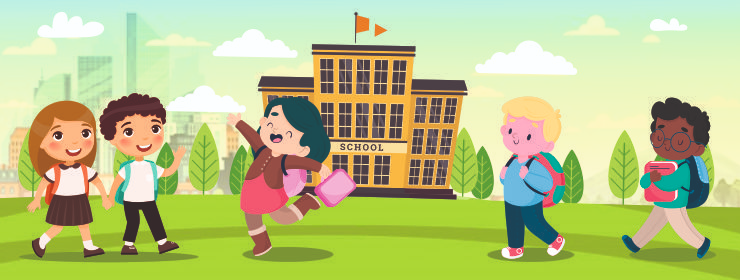In today’s complex educational environment, a dedicated teacher must navigate numerous challenges while instilling not just academic knowledge but also character development in their students. Increasingly, educators are discovering valuable allies in this mission through carefully selected kids animated shows that embed profound character lessons within entertaining storylines. These animated programs offer compelling narratives that illustrate values and virtues in action, providing concrete examples that resonate with young viewers.
The strategic incorporation of animated content into character education represents a recognition of children’s natural affinity for storytelling and visual media. When teachers thoughtfully select and contextualize animated programs, they tap into powerful pedagogical tools that can reinforce classroom discussions about integrity, perseverance, kindness, and other essential character traits. This approach acknowledges that moral development occurs not through abstract lecturing but through compelling examples that engage both heart and mind.
Research in developmental psychology consistently demonstrates that children internalize values most effectively when they observe these principles enacted through behavior rather than simply hearing them described. Animated characters provide these behavioral models, demonstrating both positive traits worthy of emulation and mistakes that yield important lessons. The narrative structure of these shows typically reinforces that actions have consequences, an essential understanding in ethical development.
The visual language of animation offers unique advantages in depicting internal states and moral dilemmas. Thought bubbles, emotional expressions, and symbolic imagery can make visible the internal reasoning process that leads to ethical choices. This visualization of thinking helps young viewers understand not just what constitutes ethical behavior but also why such behavior matters and how it affects others.
Many contemporary animated series deliberately incorporate character education into their narrative design. Shows like “Daniel Tiger’s Neighborhood” translate complex social-emotional concepts into simple, memorable strategies sung as catchy jingles. Others like “Arthur” present realistic interpersonal challenges within the safe context of an animated world, allowing children to consider multiple perspectives and potential solutions to common social problems.
The parasocial relationships children form with beloved animated characters create powerful learning opportunities. When a favorite character demonstrates courage in facing a fear or apologizes sincerely after making a mistake, young viewers often internalize these lessons more readily than when receiving similar guidance from authority figures. The emotional connection to these characters amplifies the impact of their modeled behaviors.
Diversity representation in modern animated programming also supports important aspects of character development related to respect, inclusion, and appreciation of differences. Shows that thoughtfully depict characters from various cultural backgrounds, family structures, and ability levels help normalize diversity while teaching important lessons about empathy and understanding across differences.
The fantasy elements common in animation also enable the exploration of moral principles in heightened circumstances that clarify ethical stakes. When characters face exaggerated versions of everyday challenges—whether standing up to bullies with supernatural abilities or demonstrating honesty despite magical temptations—the core values being illustrated become more salient and memorable for young audiences.
Educators who effectively leverage animated content for character education typically extend the viewing experience through guided discussions and related activities. By pausing to analyze character motivations, predict consequences, or consider alternative approaches to problems presented in the narrative, teachers help students process the embedded lessons more deeply and apply them to their own lives.
Family engagement represents another important dimension of character education through animation. When teachers communicate with parents about the values-based content being explored through classroom viewing, families can reinforce these discussions at home. This school-home connection creates consistency in character education messages across children’s environments.
Critics sometimes dismiss animated programming as mere entertainment lacking educational substance. However, media literacy research increasingly recognizes the sophisticated moral reasoning present in many quality children’s shows. The best examples offer nuanced portrayals of ethical dilemmas rather than simplistic moral pronouncements, encouraging viewers to engage actively with complex questions about right action.
Documentary evidence from classroom implementations demonstrates the effectiveness of thoughtfully integrated animated content in character education initiatives. Teachers report increased student engagement in values-based discussions, more frequent references to positive character examples, and improved behavior when animated narratives are used to supplement traditional character education approaches.
The accessibility of animation for diverse learners represents another significant advantage. Students with different learning profiles, language backgrounds, and prior knowledge can all engage with the universal language of visual storytelling. This inclusivity ensures that character education reaches all students rather than only those who respond well to text-based or discussion-oriented approaches.
As educational priorities continue evolving to emphasize whole-child development, the thoughtful integration of animated programming into character education efforts will likely expand. The most effective approaches will balance entertainment value with substantive moral content, always guided by the educator’s intentional framing and follow-up that connects animated examples to students’ lived experiences.
In conclusion, the strategic use of children’s animated programming in character education represents a powerful approach to nurturing ethical development in young people. When selected with care and implemented with purpose, these engaging narratives provide valuable opportunities for children to explore, understand, and internalize the values essential for positive participation in their communities and the broader world.


